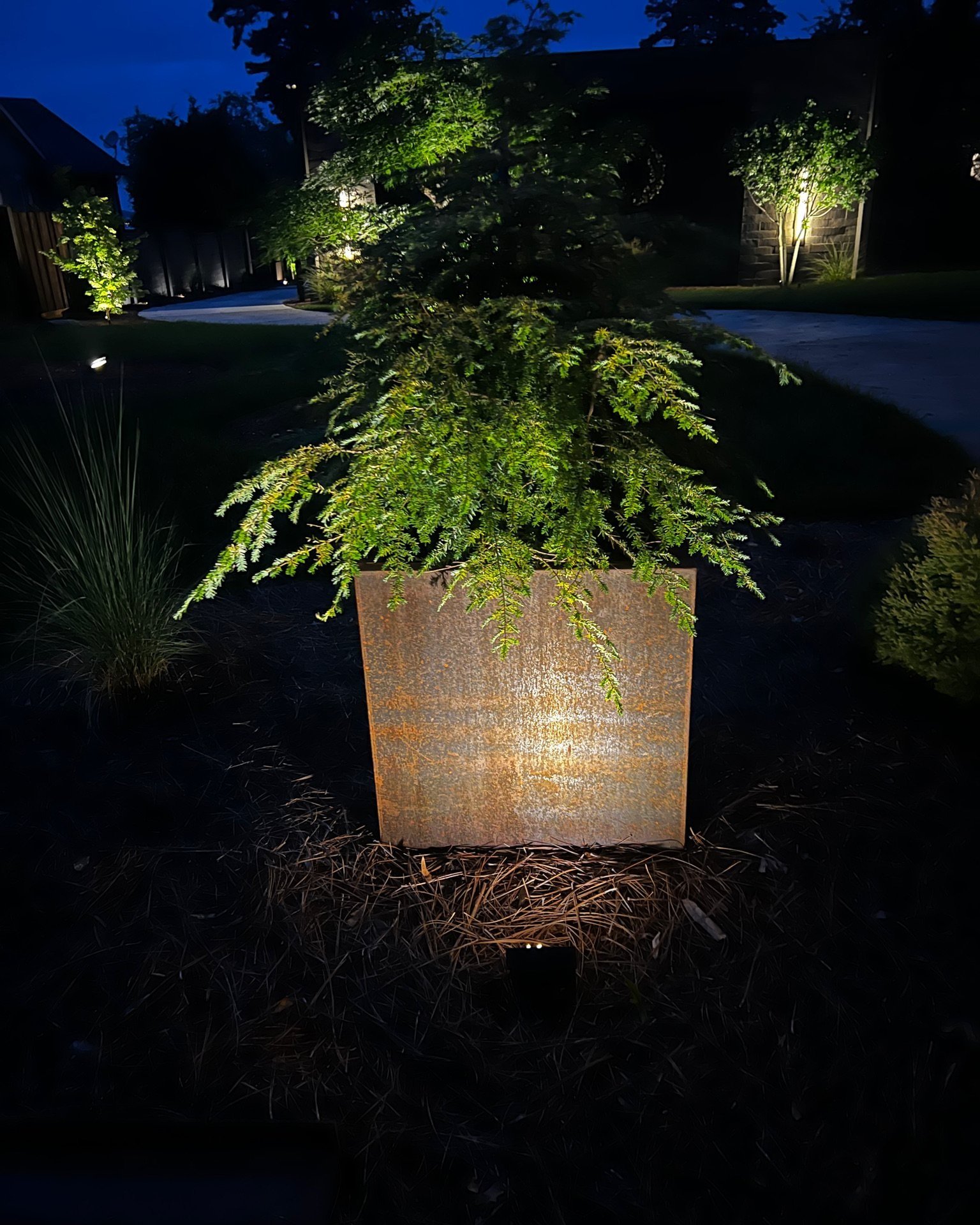FAQ with Light Your Nights Landscape Lighting
Your Guide to Outdoor Lighting in Charlotte NC
In this guide, we’ll answer some of the most common questions about designing and installing outdoor lighting, giving you expert insights straight from the pros at Light Your Nights Landscape Lighting.
How To Plan a Landscape Lighting Layout?
A well-designed lighting plan starts with understanding your space and how you want to use it. Here’s a breakdown of the process:
Survey Your Yard – Walk through your property at dusk to identify key features like trees, pathways, and outdoor living areas. This helps you pinpoint where lighting will have the most impact.
Define Your Goals – Do you want to boost security, create a warm ambiance, or highlight specific architectural details? Clarifying your goals will determine fixture placement and light intensity.
Select Your Fixtures – Spotlights, path lights, well lights, and uplights each serve different purposes. Choosing high-quality, durable fixtures ensures longevity and consistent performance.
Map It Out – Sketching a basic layout will help you visualize how your lighting will come together. Be mindful of light spread to avoid dark spots or excessive brightness.
Consider Power Needs – Low-voltage lighting is energy-efficient and safe. Planning for electrical access and proper wiring will ensure a hassle-free installation.
How Much Lighting Is Too Much?
Less is often more when it comes to outdoor lighting. Overloading your yard with too many fixtures can make it look harsh and unnatural. Instead, focus on:
Layering Light – A mix of ambient, task, and accent lighting adds depth and dimension. Think of it as creating a well-balanced composition rather than flooding your yard with light.
Proper Spacing – Avoid placing fixtures too close together, which can create harsh glare. Path lights should typically be spaced 5 to 10 feet apart for an even, natural effect.
Warm White Tones – Choosing the right color temperature (2700K-3000K) provides a welcoming, soft glow rather than a harsh, industrial feel.
What’s the Best Way to Light Up My Front or Backyard?
A successful lighting design balances function and beauty. To get it right:
Start with a Plan – A rough map of your yard, marking key elements like trees, patios, and walkways, helps create a structured approach.
Prioritize Key Areas – Entryways, seating areas, and dark corners benefit the most from lighting. These areas enhance safety while making your space more inviting.
Use the Right Fixture for the Job – Path lights, floodlights, and spotlights each serve different purposes. Choosing the right type ensures an effective and visually appealing setup.
Be Mindful of Light Pollution – Keep the lighting focused where you need it, using shields or glare control to avoid washing out the night sky.
Plan for Easy Upkeep – Consider fixture accessibility to simplify future maintenance and bulb replacements.
What Goes into a Professional Lighting Design Plan?
A well-executed lighting plan brings together creative vision and technical precision. Our experts follow these steps:
Concept Development – The overall design should complement the style of your home and outdoor space.
Detailed Layout – Every light has a purpose. Fixture selection, placement, and wiring routes are carefully planned to enhance the design.
Testing and Adjustments – A mock-up before installation ensures the final result matches your vision.
Precision Installation – High-quality, weather-resistant materials are used to ensure long-lasting performance in all seasons.
How Do You Ensure a Safe & Reliable Installation?
A professionally installed lighting system means no surprises down the road. Our process ensures:
Safety First – All wiring and electrical components comply with local codes and are installed securely to avoid hazards.
Durability Matters – We use protective conduits for underground wiring and weatherproofing to keep your system performing year after year.
Energy Efficiency – LED lighting lasts longer, consumes less power, and delivers consistent brightness with minimal maintenance.
Why Work with a Professional Instead of DIY?
Many homeowners attempt to install their own landscape lighting, only to run into common pitfalls like uneven lighting, misplaced fixtures, and electrical issues.
Expert Placement – Avoid harsh shadows and ineffective illumination by working with pros who understand lighting angles and fixture positioning.
Avoid Costly Mistakes – Poorly installed wiring or low-quality fixtures can lead to frequent failures and expensive repairs down the line.
Hassle-Free Maintenance – A professional lighting setup includes built-in accessibility for future adjustments and upkeep.
What’s the Process Like to Work with Light Your Nights?
Your outdoor lighting transformation starts with a conversation. We listen to your needs, walk your property, and craft a lighting plan that brings your vision to life.
No-pressure, expert advice – We guide you through fixture selection and layout options so you can make informed choices.
Tailored to your lifestyle – Whether you want a cozy backyard retreat or a stunning front entrance, we design with your goals in mind.
Ready to Elevate Your Outdoor Space?
Well designed landscape lighting adds charm, security, and functionality to your home. By working with Light Your Nights, you’re choosing expertise, reliability, and high-quality craftsmanship. Let’s bring your outdoor space to life!






